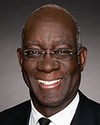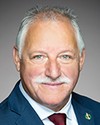That brings to mind another question. If you feel someone is better qualified to answer this one, it's fine if you pass it off.
Earlier Captain Beck was indicating that the CAF doesn't make a determination about whether it's service-related or not service-related, but in this instance we're talking about potentially different long-term disability payments depending on whether or not it's service-related. That tells me there must be something done at CAF to indicate whether or not the injury is service-related.
Can someone square that circle for me? I don't really understand. It sounds to me as though that is being done.
It also sounds to me as though there is some coordination that then happens with VAC, so why, at that time, can there not be a determination as to whether the injury is service-related and then that can be applied to everything, whether it be long-term disability or the hand-off to VAC, so that things can be better coordinated?
Why can't that be happening? It sounds to me as though somewhere along the way, before they're released, a determination is made one way or the other as to whether it is service-related. What's the problem here?





